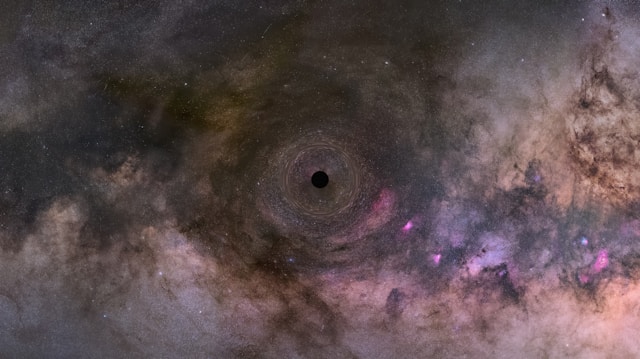Scientists discover a black hole in Omega Centauri, offering a vital clue to the evolution of stellar and supermassive black holes
A newly discovered black hole, hidden behind the star cluster Omega Centauri, has been identified as potentially the closest black hole to Earth. This significant find, made by astronomers using over two decades of images from NASA’s Hubble Space Telescope, offers crucial insights into the mysterious transformation of stellar black holes into supermassive black holes.
Despite its immense mass, equivalent to thousands of Suns, detecting black holes remains a challenging task, often likened to finding a needle in a cosmic haystack. This particular black hole, with a mass at least 8,200 times that of our Sun, has eluded scientists until now.
Embed from Getty ImagesAstronomers believe this black hole is the missing link in understanding how smaller stellar black holes evolve into their supermassive counterparts. This discovery places the black hole in an intermediate stage of its evolution, making it significantly less massive than typical black holes found at the centers of galaxies.
Matthew Whittaker, an undergraduate student at the University of Utah and co-author of the study, explained, “There are black holes slightly heavier than our Sun that are like ants or spiders—hard to spot, but everywhere in the universe. Then you have supermassive black holes like Godzilla in the centres of galaxies, easily visible. Intermediate-mass black holes are on the level of Bigfoot. Spotting them is like finding the first evidence for Bigfoot—people are going to freak out.”
Anil Seth, an associate professor of astronomy at the University of Utah and co-principal investigator of the study, described the finding as a “once-in-a-career” event. “I’ve been excited about it for nine straight months,” he said. “Every time I think about it, I have a hard time sleeping. Extraordinary claims require extraordinary evidence, and this is truly extraordinary.”
The discovery was made possible by analyzing more than 500 images from Hubble, revealing seven fast-moving stars near the center of Omega Centauri. These stars appear to be gravitationally influenced by a massive object, which can only be a black hole of such significant mass.
Maximilian Häberle of the Max Planck Institute for Astronomy, who led the investigation, explained, “We discovered seven stars that should not be there. They are moving so fast that they would escape the cluster and never come back. The most likely explanation is a very massive object gravitationally pulling on these stars, keeping them close to the centre. The only object that can be so massive is a black hole.”
While this black hole might be the closest one to Earth, there is no need for concern. It is still approximately 17,700 light-years away. This distance is much closer than the previously known closest black hole, located 26,000 light-years away at the centre of the Milky Way.
Omega Centauri, visible to the naked eye from Earth, is a popular target for stargazers in the southern hemisphere. However, despite its visibility, the black hole at its centre remains unseen without advanced telescopic technology.
Analysis:
Political:
The discovery of this new black hole has significant implications for the global scientific community. It showcases the collaborative efforts of international researchers and highlights the importance of funding and support for astronomical research. Governments and space agencies may leverage this finding to advocate for increased investments in space exploration and technology, reinforcing the role of scientific inquiry in enhancing our understanding of the universe.
Social:
The finding of a new black hole behind Omega Centauri sparks excitement and curiosity among the public. It underscores the importance of science communication in making complex astronomical discoveries accessible and engaging. This discovery may inspire a new generation of astronomers and scientists, emphasizing the value of education and outreach in fostering scientific literacy and enthusiasm.
Racial:
In the context of diversity and inclusion in science, this discovery serves as a reminder of the need for representation in scientific research. Efforts to ensure diverse voices and perspectives in astronomy can enrich the field and drive innovation. Promoting inclusivity in science can help address systemic barriers and encourage participation from underrepresented communities, contributing to a more equitable and diverse scientific workforce.
Gender:
The involvement of scientists like Anil Seth and Maximilian Häberle highlights the importance of recognizing and promoting gender diversity in STEM fields. Encouraging women and other underrepresented genders to pursue careers in astronomy and related sciences can lead to more inclusive and innovative research environments. This discovery can serve as a catalyst for initiatives aimed at closing the gender gap in science and technology.
Economic:
The economic implications of this discovery extend to the potential technological advancements and commercial applications that may arise from a deeper understanding of black holes. The technologies developed for astronomical research can have broader applications, driving innovation in various industries. Additionally, the public interest generated by such discoveries can boost tourism and educational activities related to astronomy, contributing to local economies and fostering a culture of scientific curiosity.
